News
Please note, CSHOR concluded on 30 June 2022.
This site contains all of the science delivered over a five-year period from 1 July 2017.
Interbasin and interhemispheric impacts of a collapsed Atlantic Overturning Circulation
7 June 2022
A recent Nature Climate Change article, by Bryam Orihuela-Pinto, Matthew H. England & Andréa S. Taschetto (2022), shows that Atlantic Meridional Overturning Circulation collapse can accelerate the Pacific trade winds and Walker circulation by leaving an excess of heat in the tropical South Atlantic. This tropical warming drives anomalous atmospheric convection, resulting in enhanced subsidence over the east Pacific and a strengthened Walker circulation and trade winds. Further teleconnections include weakening of the Indian and South Atlantic subtropical highs and deepening of the Amundsen Sea Low. These findings have important implications for understanding the global climate response to ongoing greenhouse gas increases. The authors’ discuss the significance of their research in The Conversation.
CSHOR Science Review
27 May 2022
The CSHOR Steering Committee, Advisory Committee and project leaders met via video in late May to review the Centre’s performance. The reference document for the review, which summarises the Centre’s impressive research achievements over a five-year period to 30 June 2022, is available at this link. In the report, each of the six project teams provide an assessment of progress against the Centre’s research objectives, highlight research collaboration, and document plans for future research after CSHOR concludes on 30 June 2022.
Deep Argo Reveals Bottom Water Properties and Pathways in the Australian-Antarctic Basin
23 February 2022
A Journal of Geophysical Research: Oceans article by Foppert et al. (2021), on Antarctic Bottom Water changes and pathways revealed by Deep Argo floats, was selected as a Research Highlight in the AGU publication EOS. Twelve Deep Argo floats were deployed in the Australian-Antarctic Basin and have been continuously profiling for over two years, producing an unprecedented observational data set of AABW properties. Read the full article at this link.
El Niño/Southern Oscillation inhibited by submesoscale ocean eddies
14 February 2022
A recent Nature Geoscience article, by Shengpeng Wang et al. (2022), identifies a pathway to resolve the long-standing overestimation of El Niño and La Niña amplitudes in climate simulations. The El Niño/Southern Oscillation is characterized by irregular warm (El Niño) and cold (La Niña) events in the tropical Pacific Ocean, which have substantial global environmental and socioeconomic impacts. These events are generally attributed to the instability of basin-scale air–sea interactions in the equatorial Pacific. However, the role of sub-basin-scale processes in the El Niño/Southern Oscillation life cycle remains unknown due to the scarcity of observations and coarse resolution of climate models.
Using a long-term high-resolution global climate simulation, the authors find that equatorial ocean eddies with horizontal wavelengths less than several hundred kilometres substantially inhibit the growth of La Niña and El Niño events. These submesoscale eddies are regulated by the intensity of Pacific cold-tongue temperature fronts. The eddies generate an anomalous surface cooling tendency during El Niño by inducing a reduced upward heat flux from the subsurface to the surface in the central-eastern equatorial Pacific; the opposite occurs during La Niña. This dampening effect is missing in the majority of state-of-the-art climate models.
Dr Wenju Cai, CSHOR Director, discussed the study’s findings during a ABC Radio Central Brisbane interview.
Increased ENSO sea surface temperature variability under four IPCC emission scenarios
1 February 2022
Sea surface temperature (SST) variability of El Niño–Southern Oscillation (ENSO) underpins its global impact, and its future change is a long-standing science issue. In its sixth assessment, the IPCC reports no systematic change in ENSO SST variability under any emission scenarios considered. However, in a communication published yesterday in Nature Climate Change, Cai et al. (2022) present a comparison between the 20th and 21st century which shows a robust increase in century-long ENSO SST variability under four IPCC plausible emission scenarios.

a,b, ENSO Niño3.4 SST variability (in oC) in 50-year period of the current climate ending 2014 (x axis) and 50-year period of the future climate ending 2099 (y axis), under SSP585 (a) and SSP126 (b), respectively. The number of models generating an increase/decrease in ENSO variability is indicated in the top-left/bottom-right corner. Using the period length of 50 years sees a total of 34 out of 43 (79.1%) models under SSP585, and 27 out of 39 (69.2%) models under SSP126 produce increased ENSO SST variability (Cai et al., 2022)

Prof John Church (photo by Bruce Miller)
Order of Australia (AO) Honours – Prof John Church
Congratulations to Prof John Church, who was appointed to an Officer of the Order of Australia (AO), for ‘distinguished service of a high degree to Australia or to humanity at large.’
Prof Church is a Professor at UNSW’s Climate Change Research Centre (CCRC), and collaborates with CSHOR’s Southern Ocean and sea-level change project team. His work has contributed to the assessments of the science of climate change by the Intergovernmental Panel for Climate Change and to the work of the World Climate Research Program, and in the public debate on the evidence for and underlying science of climate change.

Photo by Peter Mathew
Dr Steve Rintoul receives a CSIRO Medal for Lifetime Achievement
8 December 2021
CSIRO Fellow and CSHOR Project Leader, Dr Steve Rintoul, was awarded the 2021 Medal for his leadership in expanding our knowledge of the role of the Southern Ocean in regional and global climate, including motivating international collaboration, inspiring early career researchers, and translating knowledge for policymakers. He has led the design, resourcing and implementation of major field programs including 16 research expeditions to the Southern, Indian and Pacific Oceans.
La Niña and tropical rainforests
22 November 2021
Dr Wenju Cai, CSHOR Director, discusses the effect of La Niña on tropical rainforests with Carolyn Cowan, writing for Mongabay.com. The full story is at this link.
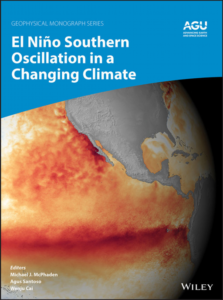 AGU book, El Niño Southern Oscillation in a Changing Climate, showcased at COP26
AGU book, El Niño Southern Oscillation in a Changing Climate, showcased at COP26
1 November 2021
AGU were invited to contribute four books to a special COP26 Virtual Book Showcase: El Niño Southern Oscillation in a Changing Climate was selected for this special books collection.
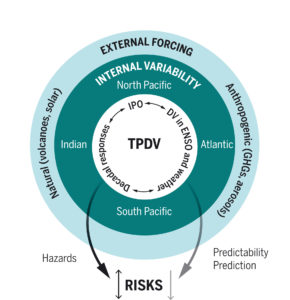
Schematic overview of key issues raised.The inner circle provides a few examples of TPDV, together with some of the processes responsible for TPDV originating in the tropical Pacific. These include the Interdecadal Pacific Oscillation (IPO), decadal responses to external forcing, decadal variability in ENSO and weather, and the impact of this decadal variability on the tropical Pacific. The small, two-way arrows in the inner circle indicate the possibility of two-way interactions between these phenomena. The inner ring describes internal processes that can drive or influence TPDV, indicating that this can originate in the Pacific beyond the tropical Pacific and in the (tropical) Indian and Atlantic Oceans. The outer ring represents external forcing that can drive or influence TPDV. This includes both natural (e.g., volcanoes) and anthropogenic (e.g., anthropogenic GHG emissions) factors. The large arrows extending to the bottom of the figure represent the risks associated with TPDV (e.g., drought). The arrow on the left indicates that TPDV affects such risks. The arrow is dark to indicate that many of the risks are well established. The large arrow on the right indicates that skillful predictions, which depend on the existence of predictability in the climate system, can help to reduce the risks. This arrow is gray to indicate that decadal predictions for the tropical Pacific are still at a formative stage.
Predicting Tropical Pacific decadal climate variability and change
1 October 2021
Tropical Pacific decadal climate variability and change (TPDV) affects the global climate system, extreme weather events, agricultural production, streamflow, marine and terrestrial ecosystems, and biodiversity. Although major international efforts are underway to provide decadal climate predictions, there is still a great deal of uncertainty. A review article by Power et al. (Including Cai, W., Zhang, X., and Wang, G.) (2021), published in Science, critically synthesises what is known and not known about the characteristics and causes of TPDV, and the accuracy to which it can be simulated and predicted. The article concludes with recommendations to improve our understanding of and ability to predict TPDV.
Read the review article at this link.
Dr Steve Rintoul joins the 2021 class of AGU Fellows
28 September 2021
Congratulations to Dr Steve Rintoul, who is one of 59 individuals recognised for their outstanding achievements and contributions by: (a) pushing the frontiers of American Geophysical Union (AGU)-related science forward; (b) representing AGU’s shared vision of a thriving, sustainable, and equitable future for all powered by discovery, innovation, and action; and (c) conducting themselves with integrity, respect, diversity, and collaboration while creating deep engagement in education and outreach.
Enhanced North Pacific impact on ENSO under greenhouse warming
20 September, 2021
A majority of El Niño Southern Oscillation (ENSO) events are preceded by the North Pacific Meridional Mode (NPMM), a dominant coupled ocean–atmospheric mode of variability. How the precursory NPMM forcing on ENSO responds to greenhouse warming remains unknown. Using climate model ensembles under high-emissions warming scenarios, the authors of a study recently published in Nature Climate Change (Jia et al., 2021), find an enhanced future impact on ENSO by the NPMM. This is manifested by increased sensitivity of boreal-winter equatorial Pacific winds and sea surface temperature (SST) anomalies to the NPMM three seasons before.
Go to the Nature Climate Change publication via this link.
Projected ocean warming constrained by the ocean observational record
14 September, 2021
An accurate estimate of global ocean warming is critical in tracking the Earth’s energy imbalance and assessing the status of current and future climate change. In a paper published in Nature Climate Change, CSHOR researchers, Drs Lyu and Zhang and Prof Church, report that improved ocean observations in the past 15 years can be used to reduce uncertainties in climate model projections of 21st century ocean warming.
Further detail, including a link to the publication, Dr Lyu’s interview, and an article in The Conversation, is available here.
Changing El Niño–Southern Oscillation in a warming climate
18 August, 2021
A review article by Cai et al. (2021), published in Nature Reviews Earth & Environment, synthesises advances in observed and projected changes of multiple aspects of El Niño–Southern Oscillation (ENSO), including the processes behind such changes. The review finds that models which best capture key ENSO dynamics also tend to project an increase in future ENSO sea surface temperature (SST) variability and, thereby, ENSO magnitude under greenhouse warming, as well as an eastward shift and intensification of ENSO-related atmospheric teleconnections. Read the CSHOR post here.
Queen’s Birthday Honours for Dr Steve Rintoul
15 June 2021
Dr Steve Rintoul, CSHOR Project Leader and CSIRO Fellow, was awarded an Officer of the Order of Australia (AO) for his service to climate science. Congratulations Steve!
Read more about Steve’s career at CSIRO ECOS. The award was also reported in The Hobart Mercury on 14 June 2021.
Global changes in oceanic mesoscale currents
22 April 2021
Prof Matthew England discussed results from work he published with colleagues at Australian National University that showed a significant increase in global eddy kinetic energy detected over the last 3 decades, with a particularly strong increasing trend signal over the Southern Ocean. The work, which appeared in Nature Climate Change, was profiled in the Sydney Morning Herald (Australia 22/04/2021), The Age (Australia 22/04/2021), and The Guardian (Australian Edition 23/04/2021). Read the journal article here.
Dr Guojian Wang’s science journey
14 April 2021
Dr Guojian Wang from the CSHOR team has shared a story on his science journey with the CSIRO blog. Read more about Guojian’s research into El Nino Southern Oscillation and the Indian Ocean Dipole, and what inspired him into a science carer, at this link.
 Dr Kathy Gunn joins CSHOR
Dr Kathy Gunn joins CSHOR
1 March 2021
Dr Kathy Gunn has joined CSIRO as a Postdoctoral Fellow in the Southern Ocean dynamics, circulation and water mass formation project team. Her research uses physical and acoustic observations to better understand water mass variability at a range of scales. She has worked on warm water transport in the west Antarctic Peninsula, mixing at fronts in the Southwest Atlantic, and small-scale to large-scale temperature and salinity variability in the Indian Ocean. As a member of the CSHOR team, Dr Gunn will use classic and state-of-the-art hydrographic observations to quantify the ventilation of bottom water over time and space. Dr Gunn replaces Dr Annie Foppert, who moved to a new role as Research Associate with the Australian Antarctic Partnership Program (AAPP).
Reconciling global mean and regional sea level change in projections and observations
15 February 2021
A study led by Ocean University of China and CSHOR student, Jinping Wang, and published in Nature Communications, finds climate model projections of sea level rise in the early 21st century are in good agreement with sea level data recorded in the corresponding period. Read more at this link.
Opposite response of strong and moderate positive Indian Ocean Dipole to greenhouse warming
1 December 2020
A new study by Cai, Yang and Wu et al. published in Nature Climate Change shows that climate extremes seen in 2019-20 are likely to occur more frequently under greenhouse warming. Faster warming in the equatorial northwestern Indian Ocean favours atmosphere convection in the region. Equatorial nonlinear positive feedbacks responsible for the strong cooling in the equatorial eastern Indian Ocean are strengthened. Low-tropospheric warming which is faster than the surface warming is inconducive to Ekman pumping that drives warm anomalies. For further detail, including links to several media articles and to the study, go to the CSHOR post here.
AMOS Uwe Radok Award and Morton Medal 2020
1 December 2020
Dr Alessandro Silvano, the lead author of the recent CSHOR paper published in Nature Geoscience, has just been awarded the Uwe Radok Award for best PhD thesis by the Australian Meteorological and Oceanographic Society. Dr Silvano completed his PhD at the Institute for Marine and Antarctic Studies (IMAS) at the University of Tasmania, and is now a Research Fellow at the University of Southampton in the UK. His PhD research at IMAS focused on the ocean-ice shelf interaction at the Totten Glacier in East Antarctica; supervised by IMAS Associate Professor Guy Williams, and CSHOR’s Drs Steve Rintoul and Beatriz Peña-Molino. Dr Silvano was employed by CSHOR on a casual appointment following completion of his PhD.
Prof Matthew England has been awarded the Morton Medal in recognition of his leadership in oceanography and climate and related fields, particularly through education and the development of young scientists, and through the building of research environments in Australia. Prof England is Deputy Director (Research) and Scientia Professor – Climate Change Research Centre (CCRC) at The University of New South Wales, and a CSHOR Project Leader.
Prof John Church Elected to the AGU Fellows Class of 2020
18 November 2020
Prof John Church was elected to the American Geophysical Union’s (AGU’s) Fellows Class of 2020 for his exceptional contribution to the AGU Earth and space sciences community. Prof Church is a Professor at UNSW’s Climate Change Research Centre (CCRC), and collaborates with CSHOR’s Southern Ocean and sea-level change project team.
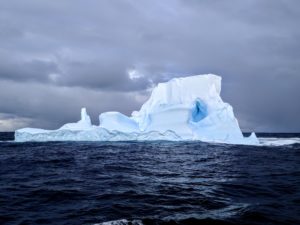
Image Credit: Pasquale Castagno
Recent climate extremes have driven unprecedented changes in the deep ocean
17 November 2020
A new study published in the journal Nature Geoscience, led by Dr Alessandro Silvano (University of Southampton and CSIRO) and CSHOR researchers, documents an increase in the supply of bottom water to the deep Indian and Pacific Oceans. New measurements reveal a surprising increase in the amount of dense water sinking near Antarctica, following 50 years of decline. The study highlights the sensitivity of Antarctic Bottom Water (AABW) formation to remote forcing and shows that climate anomalies can drive episodic increases in local sea ice formation that counter the tendency for increased ice-sheet melt to reduce AABW formation.
Read the CSHOR post at this link. The full article is on the Nature Geoscience website here.
ARC Discovery Project Announced
16 November 2020
Recently announced, the University of Tasmania received an Australian Research Council (ARC) Discovery Project Grant for $764,194 to develop high-resolution model simulations that examine ocean-atmosphere interactions along the Indonesian Throughflow (ITF) from the Pacific to the Indian Ocean. The ITF is one of the weather systems that drives changes in winds and rainfall around Australia and the entire Indo-Pacific region. This project links with the CSHOR Indo-Pacific inter-basin exchange project. The Discover Project Grant is highlighted on the ARC website at this link.
 Book Release – ENSO in a changing climate
Book Release – ENSO in a changing climate
Update – on 29 December 2020, the book, ‘El Niño Southern Oscillation in a Changing Climate’, launched in November 2020, was highlighted in a Sydney Morning Herald article explaining El Niño and La Niña events.
9 November 2020
El Niño is an unusual warming of the tropical Pacific that wreaks havoc on weather systems around the globe. It happens every few years and, like its cold counterpart La Niña, has profound effects on society and the environment. The irregular cycle between warm El Niño and cold La Niña events, referred to as El Niño Southern Oscillation, or ENSO, is the focus of a new book, ‘El Niño Southern Oscillation in a Changing Climate’, published by Wiley as part of the centennial celebration of the American Geophysical Union. The book is the first comprehensive examination of how ENSO cycle dynamics and impacts may change under the influence of rising greenhouse gas concentrations in the atmosphere.
Michael McPhaden (U.S. National Oceanic and Atmospheric Administration (NOAA) and CSHOR Advisory Committee Member), Agus Santoso (University of New South Wales (UNSW) and CSHOR project leader), and Wenju Cai (CSIRO and CSHOR Director), served as editors of the book.
Read the Editors’ Vox on the Eos website at this link.
CSHOR Session at AMOS 2021
CSHOR project leaders, Guojian Wang, Agus Santoso, Xuebin Zhang and Benjamin Ng are convening a session titled, ‘Southern hemisphere oceans and climate variability‘ at the AMOS 2021 Conference – online from 8 to 12 February 2021.
Abstract: The southern hemisphere oceans encompass many key elements of the Earth’s climate system, e.g., Indo-Pacific warm pool, Indonesian Throughflow, Super-gyre Circulation, and the vast Southern Ocean. Although more than 80% of the southern hemisphere is covered by ocean, the Amazonia, which has the largest rainforest in the world working as the lungs of the planet, and the Antarctic, which is covered by an average two-kilometre-thick ice sheet, can influence the Earth’s climate tremendously. All these components are influenced by climate variability in the region, including in the Indo-Pacific Oceans, such as the El Niño-Southern Oscillation (ENSO) and Indian Ocean Dipole (IOD) which exert significant impact on weather patterns, rainfall, air-sea fluxes, sea level, ocean density and circulations, ecosystems, and many others. How these modes of variability teleconnect in the southern hemisphere, and how they change under global warming, continue to be areas of active research.
Abstracts close on 6 November 2020.
Visit the conference website at this link.
La Niña event expected in 2020/21
28 September 2020
Dr Agus Santoso was interviewed by Peter Hannam for the Sydney Morning Herald/The Age about an emerging La Niña in 2020. The article reports that the Bureau of Meteorology is expected to declare a La Niña event is under way in the Pacific, underscoring climate influences that point to a wetter than usual end to 2020 across northern and eastern Australia. The article is available here.
Butterfly effect and a self-modulating El Niño response to global warming
3 September 2020
In an article published online today in Nature we show that like a butterfly effect, an infinitesimal random perturbation to identical initial conditions induces vastly different initial ENSO variability, which systematically affects its response to greenhouse warming a century later. In experiments with higher initial variability, a greater cumulative oceanic heat loss from ENSO thermal damping reduces stratification of the upper equatorial Pacific Ocean, leading to a smaller increase in ENSO variability under subsquent greenhouse warming. This self-modulating mechanism operates in two large ensembles generated using two different models, each commencing from identical initial conditions but with a butterfly perturbation; it also operates in a large ensemble generated with another model commencing from different initial conditions and across climate models participating in the Coupled Model Intercomparison Project. Thus, if the greenhouse-warming-induced increase in ENSO variability is initially suppressed by internal variability, future ENSO variability is likely to be enhanced, and vice versa. This self-modulation linking ENSO variability across time presents a different perspective for understanding the dynamics of ENSO variability on multiple timescales in a changing climate. Go to the CSHOR post for a link to the article and to related news items.
iHESP releases high-resolution climate simulation data
June 2020
The International Laboratory for High-Resolution Earth System Prediction (iHESP) plan to release an unprecedented set of high-resolution climate simulation data completed during its inaugural year. The data sets are from two sets of simulations. The first set, released in June 2020, consists of a long, pre-industrial (1850) control simulation and the subsequent transient simulation for the 1850-2005 historical and 2006-2100 future periods. The second set, with release planned in December 2020, has a 130-year control simulation run for 1950 conditions and the accompanying 100-year transient simulation for the 1950-2050 period.
All simulations were conducted with two different model resolutions: 1) high-resolution configuration that has 25 km for atmosphere and land surface and 10 km for ocean and sea ice; and 2) low-resolution configuration that has 100 km for atmosphere, land surface, ocean and sea ice.
“I hope to use the high-resolution coupled model in my Indo-Pacific inter-basin exchange project,” said Dr Bernadette Sloyan, CSHOR Project Leader and iHESP Scientific Advisory Board Member.
“The data sets include a comprehensive list of climate variables designed to study the impact of climate change on society, environment, and the economy. The total data volume is in the order of 500 TB.”
iHESP is a collaboration between the Qingdao National Laboratory for Marine Science and Technology (QNLM), Texas A&M University (TAMU), and the National Center for Atmospheric Research (NCAR). iHESP will develop a new advanced modelling framework for high-resolution multiscale Earth System predictions.
Further information is available on the iHESP website at this link.
CSHOR Director awarded an AAS Fellowship
25 May 2020
Dr Wenju Cai FAA, Director of the Centre for Southern Hemisphere Oceans Research, was among 24 top Australian scientists inducted today as Fellows of the Australian Academy of Science (AAS). Read more at this link.
Recent hemispheric asymmetry in global ocean warming induced by climate change and internal variability
April 2020
Knowledge of how anthropogenic heat is redistributed in the world oceans has advanced. A research paper published in Nature Communications, led by PhD student, Mr Saurabh Rathore, and co-supervised by Dr Ming Feng, quantified the asymmetric pattern of the global ocean warming in the past decade, when the southern hemisphere oceans absorbed more than 90% of the anthropogenic heating of the ocean. Whereas the greenhouse gas effect drove the overall warming trend of the ocean, the asymmetric warming pattern was most likely due to natural climate variability on the decadal time scale (Rathore et al., 2020). The asymmetry was most observed in the upper 700 m, strongly influenced by an asymmetric mode of climate variability, whereas the deep ocean warming (below 700 m) is more uniform, which can be unambiguously attributed to anthropogenic warming.

Figure: Hemisphere asymmetry of decadal warming of the global ocean (From Rathore et al., 2020). Left panel: ocean temperature anomalies averaged in the northern hemisphere; right panel: temperature anomalies averaged in the southern hemisphere.
A potential link between climate change and east African locust plagues
March 2020
Drs Cai and Santoso explain the Centre’s recent IOD research in a CarbonBrief online article looking at the possible causes of the recent locust swarms. Read Daisy Dunne’s article at this link.
February 2020
CSHOR Director, Dr Wenju Cai and co-author’s research is considered in a National Geographic online article exploring the link between recent devastating locust plagues and the increasing frequency of cyclones in the Horn of Africa. Read Madeleine Stone’s article at this link.
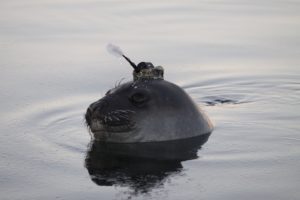
Image supplied by Dr Iain Field and the MEOP data portal
Pathways of warm water across the Antarctic slope
February 2020
A paper by CSHOR researchers (Foppert et al., 2019) was highlighted on the Marine Mammals Exploring the Oceans Pole to Pole (MEOP) website. Using the MEOP-CTD database, Dr Foppert and co-authors quantified eddy-driven transport of Circumpolar Deep Water across the East Antarctic slope and identified hotspots of this onshore transport. Read the MEOP article at this link.
Antarctic floating ice walls protect against warming seas
February 2020
The Antarctic Ice Sheet contains enough ice, if melted, to raise global sea levels by tens of metres. A new study by Wåhlin et al., published in the journal Nature, shows that floating ice walls offer some protection to the ice sheet by deflecting warm ocean currents, that would otherwise penetrate cavities beneath the floating portions of the ice sheet.
In this paper, an international research group, including CSHOR’s Dr Herraiz-Borreguero, has explored the physics behind the warm ocean currents that surround the Antarctic coast. It is a step forward in understanding heat delivery to the Antarctic Ice Sheet.
Further detail is provided in the CSHOR post at this link.
The Indian Ocean Dipole and global warming
February 2020
ABC News talked with Dr Wenju Cai, CSHOR Director, about the Indian Ocean Dipole’s (IOD) influence on drought in Australia. Read the full article which discusses both Dr Cai’s and Prof Nerilie Abram’s (ANU Research School of Earth Sciences) IOD research. Key points listed in the article are: changes in the IOD’s behaviour is increasing the risk of more droughts for Australia; IOD events have become stronger and more frequent since the 1960’s; and one of the main reasons this has happened is because the Indian Ocean off Africa was warming faster than the Indian Ocean off Australia.
Read Ben Deacon’s article at this link.
The importance of Antarctica for the Earth’s climate
January 2020
A conversation between Dr Steve Rintoul and Robyn Williams on “The importance of Antarctica for the Earth’s climate” was broadcast on the ABC’s Science Show at this link. The talk was recorded at a public lecture during National Science Week.
The Indian Ocean Dipole and Australia’s fire season
January 2020
Science News talked with Dr Wenju Cai, CSHOR Director, about the historical link between the Indian Ocean dipole (IOD) and Australian fires, and the outlook for the current fire season. In the article, Dr Cai explains that the IOD pattern has positive, negative and neutral phases, depending on whether eastern or western Indian Ocean waters are warmer than average. The more extreme the temperature difference between the ocean’s eastern and western regions, the stronger the phase. When the Indian Ocean dipole is in a particularly strong positive phase — as it was in 2019 — it correlates to some of Australia’s worst fire seasons.
In December 2019, Dr Cai was also quoted by the Financial Review Online regarding this matter. Read the articles at the Financial Review Weekend and Financial Review Online at this link.
Read Carolyn Gramling’s article at this link.
2019
Australian seasonal forecasts challenged by Pacific Ocean warming
17 December 2019
New CSHOR research has found global warming will make it more difficult to predict multi-year global climate variations, a consequence of changes to long-term climate variability patterns in the Pacific Ocean. The results, published today in Nature Climate Change, shed light on how the Pacific Decadal Oscillation (PDO) is responding to a changing climate, with implications for assessing multi-year risks to marine ecosystems, fisheries and agriculture. More detail provided in the CSHOR post at this link.
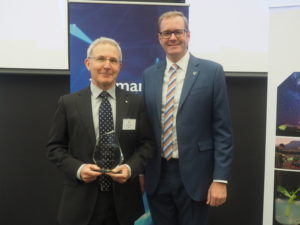
Dr Steve Rintoul receiving his award from The Hon. Michael Ferguson MP.
Premier’s Tasmanian STEM Researcher of the Year
November 2019
Dr Rintoul was awarded the Premier’s Tasmanian STEM Researcher of the Year prize for his pioneering work on climate research in the Southern Ocean.
Dr Bernadette Sloyan joins Ocean Science Editorial Board
November 2019
Dr Sloyan was recently appointed to the Ocean Science Editorial Board as a journal topic editor. Ocean Science is an open-access, peer-reviewed scientific journal published on behalf of the European Geosciences Union. The journal covers all aspects of oceanography and Dr Sloyan’s expertise in documenting and understanding ocean circulation and variability, using a combination of observational-based and modelling methods, enhances the journal’s ability to provide editorial advice on a broad range of ocean research topics.
Sustained Antarctic Research
September 2019
A new paper published in One Earth presents a roadmap of future research imperatives in Antarctic and the Southern Ocean (Kennicutt et al., 2019). The volume of the journal was timed to coincide with the Climate Action Summit in New York. The paper provides a comprehensive summary of progress made on 80 high priority science questions identified in a “horizon scan” carried out in 2014 and outlines priorities for the future.
Building an international transparent ocean community (OceanObs’19 special session)
September 2019
QNLM and CSIRO hosted a special session at OceanObs’19, Hawaii in September 2019. The session focused on building an international transparent ocean community by encouraging nations to share data, develop innovative observing technologies, and build a cost-effective global observing system. A brief report is available here.
CSHOR Director delivers AOGS 2019 Distinguished Lecture
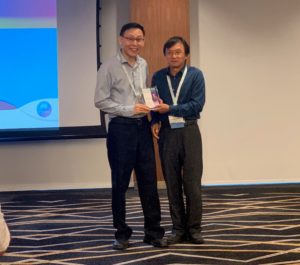
Dr Wenju Cai with Prof Changming (Charles) DONG, President of the AOGS Ocean Sciences Sector.
August 2019
Dr Wenju Cai, CSHOR Director, gave the Ocean Sciences Distinguished Lecture at the recent Asia Oceania Geosciences Society (AOGS) Annual Meeting (28 July to 2 August 2019, Singapore). His presentation titled, ‘Response of El Niño/La Niña to Greenhouse Warming’, presented recent findings showing that the frequency of extreme La Niña, and variability of eastern Pacific El Niño SST are expected to increase in response to unabated greenhouse gas emissions. Dr Cai suggested we should expect more occurrences of extreme weather associated with ENSO events, with pronounced implications for the twenty-first century climate, extreme weather, and ecosystems.
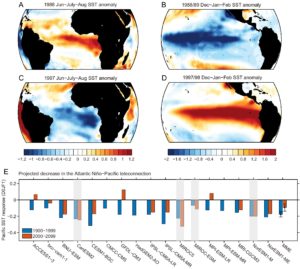
Figure: The precursor of Atlantic Niño/Niña to recent extreme ENSO events and projected changes in the Atlantic-Pacific teleconnection. A, 1988 Atlantic Niño. B, 1988/89 extreme La Niña. C, 1997 Atlantic Niña. D, 1997/98 extreme El Niño. E, Projected decrease in the Atlantic Niño-Pacific teleconnection.
Weakening Atlantic Niño–Pacific connection under greenhouse warming
August 2019
As greenhouse warming continues, Pacific ENSO is projected to be less affected by the Atlantic Niño/Niña and more challenging to predict. A paper, co-authored by CSHOR researchers, published online in Science Advances, shows that greenhouse warming leads to a weakened influence from the Atlantic Niño/Niña on the Pacific ENSO. In response to anomalous equatorial Atlantic heating, ascending over the equatorial Atlantic is weaker due to an increased tropospheric stability in the mean climate, resulting in a weaker impact on the Pacific Ocean. Read the full article by Fan Jia, Wenju Cai and Lixin Wu et al. at this link. Wenju Cai comments on these findings in a ScienceNews article by Maria Temming.
Sea-level rise began accelerating in the 1960s
August 2019
ABC Science talked with CSHOR project leader, Dr Xuebin Zhang, about the accelerating rate of modern global sea-level rise (link).
Curious Climate: will rising seas change our coastline?
August 2019
Dr Xuebin Zhang talked with Joel Rheinberger on ABC radio about future sea-level rise in Tasmania (link).
Measuring and Modelling the INdonesian Throughflow International Experiment (MINTIE): an International Collaborative Study
July 2019
CSHOR’s Indo-Pacific Inter-basin exchange project and the Integrated Marine Observing System (IMOS) will lead Australian involvement in an exciting new international collaborative study of the Indonesian Throughflow. Read more about the study at this link.
Prof Matthew England joins the SO-CHIC Advisory Board
June 2019
Project Leader, Prof England, accepted an invitation to join the Advisory Board of a major new European Project, SO-CHIC (Southern Ocean Carbon and Heat Impact on Climate). SO-CHIC is a partnership across 15 European and United Kingdom agencies, including Sorbonne University, Southampton, Reading, Alfred Wegener Institute (AWI), Eidgenössische Technische Hochschule Zürich (ETH), Oxford and Geomar).
What we learnt from spending winter under Antarctic sea ice
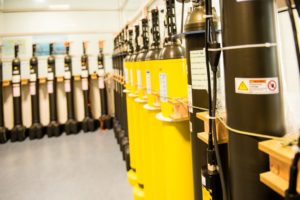
Argo floats ready for deployment.
May 2019
Read the CSIRO Blog reporting on a new mission for our fleet of Argo floats at this link.
CSHOR’s Veronica Tamsitt joins the CAPSTAN voyage aboard the RV Investigator
May 2019
One of CSHOR’s postdoctoral fellows, Veronica Tamsitt, sailed from Hobart to Fremantle as a trainer on an exciting 10-day educational voyage aboard the RV Investigator. Veronica joined six other researchers from a diverse group whose expertise span plankton biology to sediments and geophysics, to train a group of 20 honours, masters and PhD students at sea. Read more about the voyage at this link.

2nd Deep Argo Workshop, CSIRO Hobart, May 2019
2nd Deep Argo Workshop
CSHOR and CSIRO hosted the 2nd Deep Argo Workshop at CSIRO Marine Laboratories Hobart from 13 to 15 May 2019. Over 30 international and national scientists attended the workshop. A public seminar on the morning of day 1 was also well attended by Hobart-based ocean scientists.
Workshop outcomes include a plan to tackle several technical challenges experienced in deep Argo research, the co-ordination of national plans and improved communication between manufactures, scientists and funding agencies.
CSHOR Science Seminar
CSIRO and the CSHOR office hosted the CSHOR Science Seminar on Thursday 16 May. Our guest presenter, Dr Ian Allison, delivered a talk titled, ‘From Indulgence to Global Relevance: a fifty-year journey towards understanding the role of Antarctica in the climate system’. It was a fascinating personal recollection, based on Dr Allison’s own experiences over 50 years, of how Antarctic research has transitioned from a subject of exploration and basic curiosity to one of critical significance for understanding Earth’s climate system, its future changes and their global impacts. Dr Allison’s presentation and all of the project presentations can be found at this link.
Building an International Transparent Ocean Community
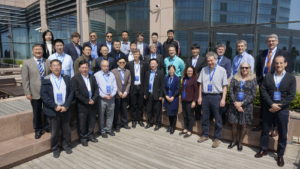
Building an International Transparent Ocean Community Workshop Group, QNLM, Qingdao, China, 15-17 April 2019
Wenju Cai, CSHOR Director, and Guojian Wang, CSHOR Project Leader, attended the Building an International Transparent Ocean Community Workshop in Qingdao from 15 to 17 April 2019. The Workshop was organized by the Qingdao National Laboratory for Marine Science and Technology (QNLM). The aim was to foster an atmosphere of strategic and critical thinking, reflection and productivity. QNLM hoped to identify areas of common interest where China could play a significant role: such as observing system design, artificial intelligence and ocean information. It is hoped that an action plan with detailed timeline and milestones will result from the Workshop.
The meeting was attended by experts from China, Germany, United States of America, Australia, Canada, France, Indonesia, and Ireland.
‘Monster’ El Nino a chance later this year, pointing to extended dry times – The Age newspaper article 16 March 2019
CSHOR scientists, Wenju Cai and Agus Santoso, are quoted in The Age newspaper in an article highlighting the increased probability of a large El Niño by the end of this year. The article by Peter Hannam discusses the findings from an international climate science conference held earlier this month in Chile. The prospect is developing on the back of recent findings by CSHOR team for possible increase in extreme El Niño occurrences under greenhouse warming. Read the full article by Cai et al. at the following link.
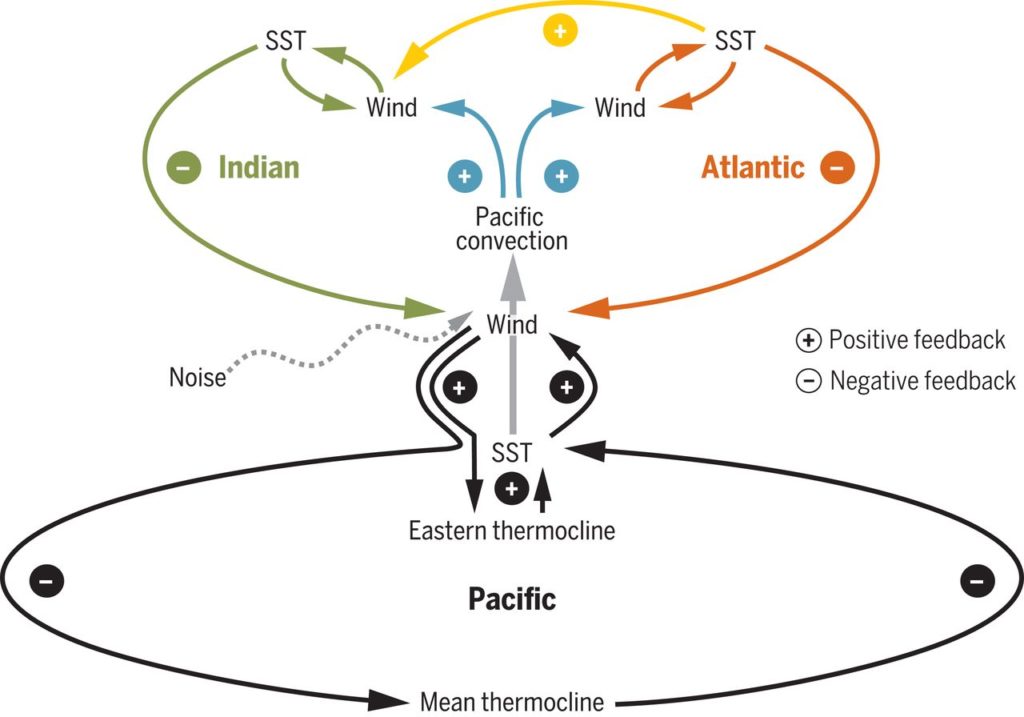
Figure: Pantropical feedbacks affecting ENSO. The black loop represents internal Pacific fast positive feedbacks (short arrows) and delayed negative feedbacks (long arrows). Interbasin feedbacks include Pacific feedbacks onto the Atlantic and Indian Oceans (blue arrows), delayed negative feedbacks of the Atlantic and Indian Oceans onto the Pacific (orange and green arrows, respectively), and positive feedbacks of the Atlantic onto the Indian Ocean (yellow arrow). The effects of atmospheric noise forcing in the Pacific are indicated by the gray dotted line (Cai et al. 2019). NB: SST = Sea surface temperature
Pantropical climate interactions
March 2019
The El Niño–Southern Oscillation (ENSO), which originates in the Pacific, is the strongest and most well-known mode of tropical climate variability. Its reach is global, it can force climate variations of the tropical Atlantic and Indian Oceans by disturbing the global atmospheric circulation. Less appreciated is how the tropical Atlantic and Indian Oceans affect the Pacific. Especially noteworthy is the multidecadal Atlantic warming that began in the late 1990s, because recent research suggests that it has influenced Indo-Pacific climate, the character of the ENSO cycle, and the hiatus in global surface warming. Discovery of these pantropical interactions provides a pathway forward for improving predictions of climate variability in the current climate and for refining projections of future climate under different anthropogenic forcing scenarios. In a Science paper published recently Cai et al. review what we know about these pantropical interactions, discuss possible ways of improving predictions of current climate variability, and consider how projecting future climate under different anthropogenic forcing scenarios may be improved. They argue that making progress in this field will require sustained global climate observations, climate model improvements, and theoretical advances.
Find out more about CSHOR ENSO and the IOD research on the project page.
Dr Bernadette Sloyan joins iHESP Advisory Board
March 2019
Project Leader, Dr Sloyan, accepted an invitation to join the iHESP Scientific Advisory Board (SAB). International Laboratory for High-Resolution Earth System Prediction (iHESP) located at TAMU is a collaboration between NCAR, Texas A&M University (TAMU), and the Qingdao National Laboratory for Marine Science and Technology (QNLM).
Prof Jonathan Gregory visits CSHOR Hobart
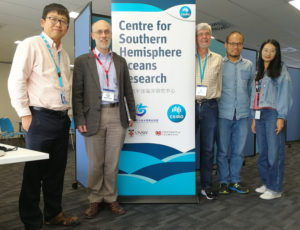
From left to right, Dr Xuebin Zhang, Prof Jonathan Gregory, Prof John Church, Dr Kewei Lyu and Ms Jingping Wang. CSHOR office February 2019
Prof Jonathan Gregory from the University of Reading, UK visited CSHOR on 11-15 February. He presented a public seminar titled, ‘Dependence of climate sensitivity to CO2 on patterns of SST variation’ and met with the CSHOR sea level project team to discuss topics of overlapping research interest, i.e., ocean heat uptake and redistribution in the Southern Ocean, ocean/climate sensitivity experiments, and ocean gyre circulation. Prof Gregory and the CSHOR team also identified opportunities for future collaboration.
Prof Gregory is a well-known climate scientist, working on mechanisms of global and large-scale change in climate and sea level on multidecadal and longer timescales. He is one of three recipients of the prestigious BBVA Foundation Frontiers of Knowledge Award in the Climate Change category for their significant contribution to detecting, understanding and projecting anthropogenic sea-level rise (https://www.bbva.com/en/frontiers-of-knowledge-award-for-detecting-understanding-and-projecting-anthropogenic-sea-level-rise/).
Find out more about CSHOR sea-level rise research on the project page.
CSHOR ENSO Science Symposium 29 to 31 January 2019
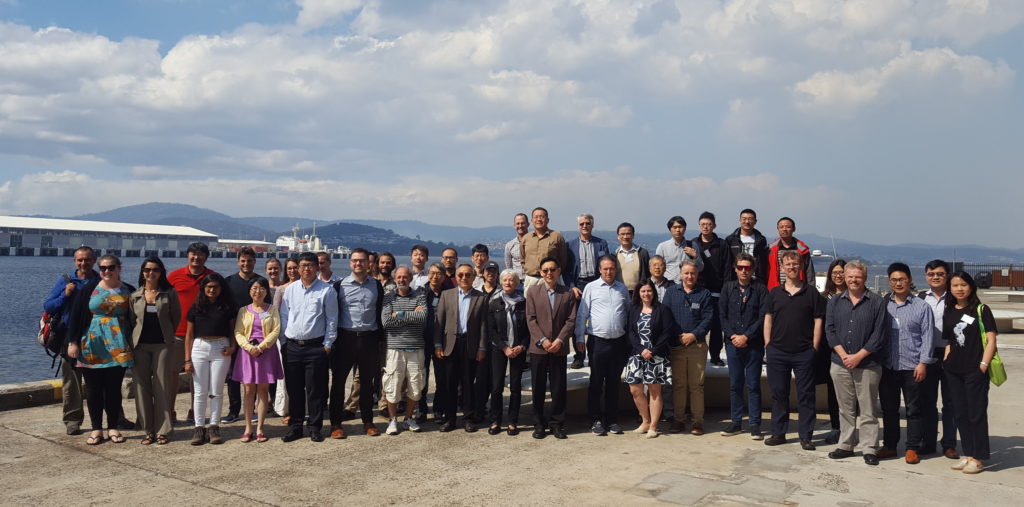
CSHOR ENSO Science Symposium. IMAS Hobart 29 to 31 January 2019
CSHOR gathered ENSO over 55 experts and students in Hobart over a 3-day symposium to address important scientific questions regarding the reliability of current modelling and observational tools and what advances are required to improve projections of ENSO in a changing climate.
The field of ENSO research is rapidly progressing and it is necessary to re-assess the state of ENSO science. ENSO significantly impacts our climate, ecosystems, economy and society on a global scale. An improved understanding of its dynamics, evolution, predictability, teleconnection and impact in a climate that is undergoing change is critical to manage risks and resources. The character of ENSO and the frequency of extreme events may change on a warming planet. Just a couple of years ago an extreme El Niño with major global climatic consequences occurred and one may wonder when the next big one will arrive.
The Symposium was followed by a 2-day writing session for ENSO book authors at CSIRO Marine Laboratories.
Find out more about the symposium at this link and on the CSHOR ENSO and the IOD project page.
Professor John Church wins top climate change award
January 2019
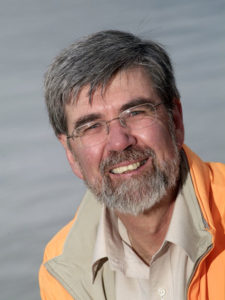
Prof John Church (photo by Bruce Miller)
Congratulations to John Church on winning the BBVA Foundation Frontiers of Knowledge Award in the Climate Change category.
Anny Cazenave (France) and Jonathan Gregory (UK) joined John in receiving the award for their outstanding contributions, the BBVA committee states, “to detecting, understanding and projecting the response of global and regional sea level to anthropogenic climate change.” Over the past 30 years John has worked with Anny Cazenave and Jonathan Gregory as joint authors on academic papers and on reports for the Intergovernmental Panel on Climate Change (IPCC), an intergovernmental body of the United Nations.
The international award, now in its 11th year, recognises significant contributions in the areas of scientific research and cultural creation. The award will be presented at a ceremony in Madrid in June 2019.
John Church is an important collaborator working with Xuebin Zhang on the CSHOR Southern Ocean role in sea-level change project.
Further information is available on the award website at this link. A UNSW Newsroom article can be viewed at this link.
CSHOR’s Annie Foppert wins award at QNLM Annual Meeting
January 2019
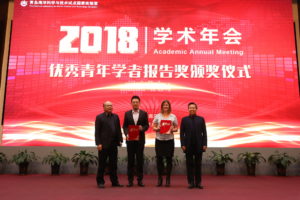
From the left, Prof Zhimeng ZHUANG, QNLM Deputy Director; Dr. Xu ZHANG, QNLM and Dr Annie Foppert, CSIRO CSHOR, both receiving 2nd prize; and Prof Jinming SONG, QNLM Deputy Director (photo courtesy of QNLM).
Congratulations to Dr Annie Foppert on winning second prize for her presentation at the Qingdao National Laboratory for Marine Science and Technology (QNLM) Academic Annual Meeting Young Scholars’ Forum held in Qingdao, China last week. Annie’s talk was titled, ‘Hot spots of eddy-driven transport across the East Antarctic slope’. The prize is 6,000 YUAN (~AU$1,200). The Annual Meeting was held on 10 and 11 January 2019.
QNLM invited many young scientists from QNLM partner organisations both in China and internationally to submit a presentation to the Forum. The presentations were of a high calibre across a broad range of ocean science disciplines.
Our staff also took the opportunity to tour the wonderful facility at QNLM and to attend a banquet in honour of CSHOR’s visit to Qingdao. CSHOR staff received a friendly and gracious reception at QNLM.
CSHOR Director takes on a new role with the WCRP
January 2019
Dr Wenju Cai, CSHOR Director, has taken on a new role as Co-chair of the World Climate Research Programme (WCRP) Climate and Ocean – Variability, Predictability, and Change (CLIVAR) Scientific Steering Group. The four-year term commenced on 1 January 2019.
2018
Increased variability of eastern Pacific El Niño under greenhouse warming
December 2018
The El Niño–Southern Oscillation (ENSO) is the dominant and most consequential climate variation on the planet. Answering the question of how ENSO may change under greenhouse warming has been plagued for decades by a persistent lack of inter-model agreement on the response of the associated sea surface temperature variability.
This paper by Cai et al. shows for the first time strong inter-model consensus over sea surface temperature variability of a type of El Niño, eastern Pacific El Niño that is strong in both strength and impact, despite differences in the details of the simulated El Niño across models. The result means that we can expect more occurrences of extreme weather associated with eastern Pacific El Niño events (the strongest and most destructive of the two types of El Niño events), which will have pronounced implications for the twenty-first century climate, extreme weather and ecosystems. Read the full article at the following link. An associated Nature ‘News and Views’ article is at this link.
Find out more about CSHOR ENSO and the IOD research on the project page.
CSHOR field campaign to support Australian monsoon prediction
In November 2018, a team of scientists from CSIRO and FIO deployed a meteorology and ocean profiling buoy and an array of fast profiling Argo floats to provide a better understanding of the ocean-atmosphere exchanges during the monsoon onset and their underlying ocean dynamics. Read more about this research and future plans at the CSHOR website post.
Moving windows to the deep ocean
November 2018
Dr Veronica Tamsitt was invited to write a ‘News and Views’ article titled, ‘Moving windows to the deep ocean’, for Nature Climate Change (Tamsitt 2018). Read the article at this link.
Find out more about CSHOR Southern Ocean dynamics research on the project page.
Understanding El Niño-Southern Oscillation Complexity
July 2018
El Niño events are characterized by tropical Pacific surface warming and weakening of trade winds occurring every few years. Such conditions are accompanied by changes in atmospheric and oceanic circulation, affecting global climate, marine and terrestrial ecosystems, fisheries and human activities. The alternation of warm El Niño and cold La Niña conditions, referred to as the El Niño-Southern Oscillation (ENSO), represents the strongest year-to-year fluctuation of the global climate system. A Nature review paper published recently (Timmermann et al. 2018) provides a synthesis of the current understanding of the spatio-temporal complexity (In terms of amplitude, timing, duration, predictability and global impacts) of this important climate mode and its influence on the earth system. The paper proposes a unifying framework to explain ENSO spatio-temporal complexity, by considering the two most dominant coupled modes of variability on about two-year and four-year time scales. Read the full article at the following link. The CSIRO blog highlighting six reasons you should care about El Niño is also recommended reading.
Find out more about CSHOR ENSO and the IOD research on the project page.
Choosing the future of Antarctica
June 2018
In a recent Nature article, Rintoul et al. present two narratives on the future of Antarctica and the Southern Ocean, from the perspective of an observer looking back from 2070. Read the CSHOR post, which includes a link to the full article, at this link.
The global influence of localised dynamics in the Southern Ocean
June 2018
This Nature review by Dr Steve Rintoul evaluates the published research on Southern Ocean change: including changes in circulation, stronger winds, and increased freshwater input. The Southern Ocean exerts a disproportionate and profound influence on global ocean currents, climate, biogeochemical cycles, and sea level rise. The paper shows that substantial progress has been made in recent years in understanding the dynamics and global influence of the Southern Ocean. It is becoming clear that local scale processes play a fundamental part in shaping large-scale circulation. This is driven by the local topography which, of course, doesn’t change to a significant degree. Read the full article at this link.
Find out more about CSHOR Southern Ocean observations and change research on the project page.
CSHOR Science Seminar and Committee Meeting at CSIRO Hobart
 The CSHOR office recently hosted a CSHOR Science Seminar and a joint CSHOR Steering and International Advisory Committee Meeting at CSIRO, Hobart. Over 40 guests attended the seminar on Thursday 3 May, including the CSHOR Steering and Advisory Committees. Advisory Committee Members commented that, ‘CSHOR is an excellent team and the science seminar is a great display. The presentations addressed important key questions and highlighted collaboration with other institutions’. Read more at this link.
The CSHOR office recently hosted a CSHOR Science Seminar and a joint CSHOR Steering and International Advisory Committee Meeting at CSIRO, Hobart. Over 40 guests attended the seminar on Thursday 3 May, including the CSHOR Steering and Advisory Committees. Advisory Committee Members commented that, ‘CSHOR is an excellent team and the science seminar is a great display. The presentations addressed important key questions and highlighted collaboration with other institutions’. Read more at this link.
Global warming is melting Antarctic ice from below
April 2018
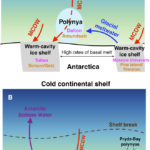 The results from a study published in Science Advances, and reported in a recent Guardian article, suggest that increased glacial meltwater input in a warming climate will both reduce Antarctic Bottom Water formation and trigger increased mass loss from the Antarctic Ice Sheet, with consequences for the global overturning circulation and sea-level rise. The latest CSHOR post provides more detail and links to the paper and The Guardian article.
The results from a study published in Science Advances, and reported in a recent Guardian article, suggest that increased glacial meltwater input in a warming climate will both reduce Antarctic Bottom Water formation and trigger increased mass loss from the Antarctic Ice Sheet, with consequences for the global overturning circulation and sea-level rise. The latest CSHOR post provides more detail and links to the paper and The Guardian article.
Find out more about CSHOR Southern Ocean observations and change research on the project page.
A new wave of southern hemisphere ocean researchers joins CSHOR
April 2018
 After a flood of applications and hours spent trawling through CVs, the Centre for Southern Hemisphere Oceans Research (CSHOR) welcomes six new Postdoctoral Fellows aboard. Read more about the new recruits here.
After a flood of applications and hours spent trawling through CVs, the Centre for Southern Hemisphere Oceans Research (CSHOR) welcomes six new Postdoctoral Fellows aboard. Read more about the new recruits here.
Recent progress in climate change research
April 2018
In a paper published in Nature Communication (Cai et al. 2018a) we show that the extreme pIOD frequency is projected to increase linearly with the GMT but approaches a maximum as the GMT stabilises, in stark contrast to a continuous increase in the extreme El Niño frequency long after the GMT stabilisation. Further detail can be found at this link.
Find out more about CSHOR ENSO and the IOD research on the project page.
CSHOR wins award in China
April 2018
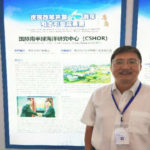 CSHOR wins an award at the 16th China’s International Talents Exchange Meeting in Shenzhen. Read more about the award at this link.
CSHOR wins an award at the 16th China’s International Talents Exchange Meeting in Shenzhen. Read more about the award at this link.
Changes in the Southern Ocean revealed by researchers aboard the RV Investigator
February 2018
Southern Ocean researchers aboard the RV Investigator find a shift in a decades-long trend towards fresher, less dense water off Antarctica. Read The Sydney Morning Herald article by Peter Hannam at this link.
Find out more about CSHOR Southern Ocean research on the Southern Ocean observations project page and the Southern Ocean dynamics project page.
2017
Explaining the large increase in ocean heat content in the southern hemisphere oceans
December 2017
A study based on previous Argo float deployments, published in Nature Climate Change (Gao et al., 2017), shows that wind-driven changes in formation and subduction of Subantarctic Mode Water in the Southern Ocean can explain the large increase in ocean heat content in the southern hemisphere oceans. Further details at: https://doi.org/10.1038/s41558-017-0022-8.
Find out more about CSHOR Southern Ocean research on the Southern Ocean observations project page and the Southern Ocean dynamics project page.
Understanding the ultimate risk of extreme El Niño associated with a 1.5˚C warming target
July 2017
In a paper published in Nature Climate Change (Wang et al., 2017a) we demonstrate that extreme El Niño frequency increases linearly with the GMT towards a doubling at 1.5 °C warming. This increasing frequency of extreme El Niño events continues for up to a century after GMT has stabilized, underpinned by an oceanic thermocline deepening that sustains faster warming in the eastern equatorial Pacific than the off-equatorial region. Ultimately, this implies a higher risk of extreme El Niño to future generations after GMT rise has halted. On the other hand, whereas previous research suggests extreme La Niña events may double in frequency under the 4.5 °C warming scenario8, the results presented here indicate little to no change under 1.5 °C or 2 °C warming.
The Paris Agreement aims to constrain global mean temperature (GMT) increases to 2 °C above pre-industrial levels, with an aspirational target of 1.5 °C. However, the pathway to these targets1,2,3,4,5,6 and the impacts of a 1.5 °C and 2 °C warming on extreme El Niño and La Niña events—which severely influence weather patterns, agriculture, ecosystems, public health and economies7,8,9,10,11,12,13,14,15,16—is little known. Here, by analysing climate models participating in the Climate Model Intercomparison Project’s Phase 5 (CMIP5; ref. 17) under a most likely emission scenario1,2.
Find out more about CSHOR ENSO and the IOD research on the project page.
CSIRO blogs
Read the latest news from CSIRO at CSIROscope.
News from QNLM
Read the latest news from QNLM at the QNLM website.